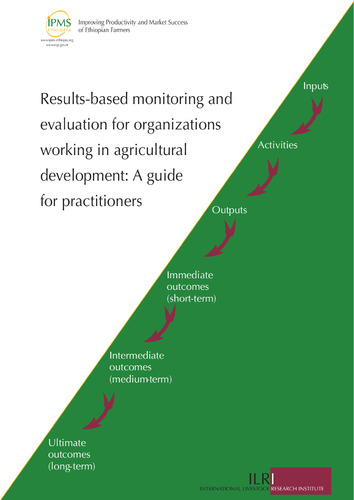Results-based monitoring and evaluation for organizations working in agricultural development: a guide for practitioners
Abstract
The purpose of this guide for practitioners is to contribute to the development of RBM&E capacity and to facilitate its institutionalization in organizations dealing with agricultural development. The target audiences of the guide include the staff in planning, monitoring and evaluation departments/units of public organizations and non-governmental organizations dealing with agricultural development at federal, regional, zonal or district levels. Staff of the agricultural research and higher learning institutes may also find the guide useful. It is assumed that users of the guide would have some basic knowledge of project/program/policy planning and implementation. The guide is based on an extensive review of M&E literature and the experiences of the RBM&E activities of the IPMS (Improving Productivity and Market Success) of Ethiopian farmers project.1 As part of its overall approach to market-oriented agricultural development, the IPMS project is working to facilitate the use and institutionalization of RBM&E system. The guide is organized as follows. Section two deals with basic concepts of RBM&E. Section three presents the relationships between the concepts and practices of M&E. Section four deals with the concepts and applications of participatory monitoring and evaluation. Sections five and six present the practices and processes of the selection of results to monitor and evaluate, and the selection of key performance indicators, respectively. Section seven discusses the methods of setting baseline data and targets, and section eight deals with data collection and analysis. While section nine deals with reporting and using M&E information, section ten discusses issues, approaches and requirements for institutionalizing and sustaining the RBM&E system.

